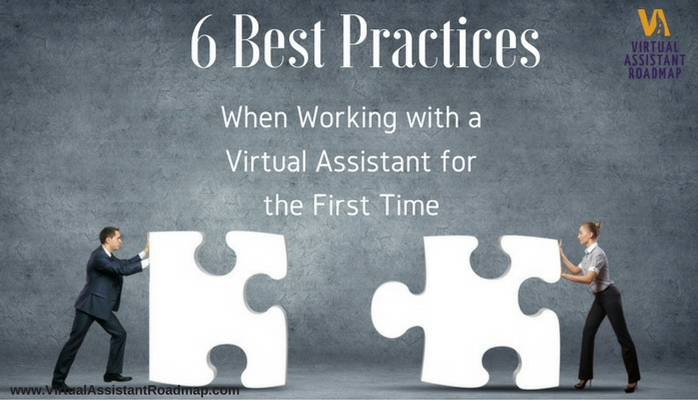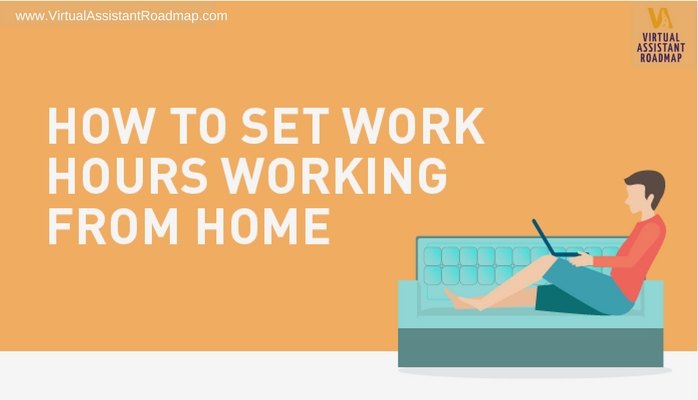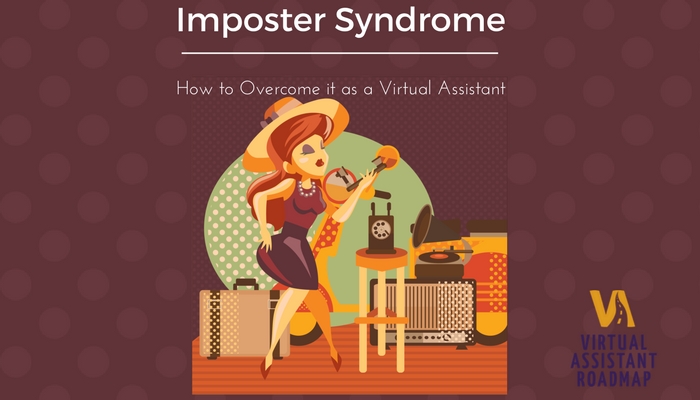- Start thinking about expanding and getting assistance now: One of the biggest frustrations I hear from business owners is that they wish they would have hired someone
 sooner…or at least started the process sooner. It is daunting and overwhelming when your to-do list becomes a mile long. Get ahead of the curve; don’t let the stacks of tasks pile up. Don’t fall victim to being a prisoner in your own business where it stops you dead in your tracks. You know that feeling of being so overwhelmed that you just take a nap!? Try not to get to that space. A virtual assistant is there to help create less stress and more time for you to focus on your passion, you know, the whole reason why you went into business for yourself to begin with. All seasoned and reliable virtual assistants have processes and procedures to bring you on board with ease. You should feel like the weight of the world has been lifted from your shoulders when you start with your perfect VA.
sooner…or at least started the process sooner. It is daunting and overwhelming when your to-do list becomes a mile long. Get ahead of the curve; don’t let the stacks of tasks pile up. Don’t fall victim to being a prisoner in your own business where it stops you dead in your tracks. You know that feeling of being so overwhelmed that you just take a nap!? Try not to get to that space. A virtual assistant is there to help create less stress and more time for you to focus on your passion, you know, the whole reason why you went into business for yourself to begin with. All seasoned and reliable virtual assistants have processes and procedures to bring you on board with ease. You should feel like the weight of the world has been lifted from your shoulders when you start with your perfect VA. - Don’t feel like you have to hand everything off all at once: It may feel like you are handing the keys to your empire over and for some that might be scary. You and your awesome new virtual assistant should work together to identify and prioritize the most important tasks. I suggest starting at a foundational level. This is so that your business is sturdy and strong. You don’t want to play a game of Jenga with your business. In many cases, people don’t even know where to start with delegation. If you are one of those business owners who have no idea where to even start, I suggest using a great tool that I built called the “Delegator”. It is a way to help identify where delegation could help with your sanity. You can access the form here >>> http://www.alpinesbsolutions.com/the-delegator/
- Let go of the negative mindset: I realize delegation can seem hard at first. I teach this and
 can get in the same mindset that many have. You know that negative mindset of, “I want to save money, so I will do it myself”, or “if it is going to get done right, I should do it myself”, or “it is going to take too long to bring someone on board and teach them the ropes”. Don’t fall victim to these statements. Growth is all about letting go of those blocks. The art of delegation comes with great rewards that you will soon realize and will look back and wonder why you didn’t seek support sooner.
can get in the same mindset that many have. You know that negative mindset of, “I want to save money, so I will do it myself”, or “if it is going to get done right, I should do it myself”, or “it is going to take too long to bring someone on board and teach them the ropes”. Don’t fall victim to these statements. Growth is all about letting go of those blocks. The art of delegation comes with great rewards that you will soon realize and will look back and wonder why you didn’t seek support sooner. - Focus on your zone of genius and let your virtual assistant focus on theirs: If you are just starting out with building your online presence you will find yourself inundated with new tools and terminology to help run your business in an online environment. This can seem daunting and can be extremely overwhelming and time consuming. You don’t need to know how to do everything to be successful. Being able to let go, release and trust in the ninja like skills of your virtual assistant, can change your entire business in a very positive and wonderful way.
- Make sure that your virtual assistant matches your core values: This is one of the most important things that a successful and long term virtual assistant relationships can have in
 my opinion. If your core values are in alignment everything else just flows so much easier. You can usually tell on the initial conversation with a virtual assistnat if the synergy is there or not. I suggest to all my clients that you don’t focus on all business in your initial conversations. It is super valuable to talk openly about what makes you both burn with passion inside as well. You can learn quite a bit from digging deeper and creating a more personal connection too. Now, don’t get me wrong, passion is important, but their credentials are extremely important too. A nice balance is a wonderful way of matching core values. Having this alignment with your virtual assistant will in turn create authenticity and trust. It is a beautiful thing.
my opinion. If your core values are in alignment everything else just flows so much easier. You can usually tell on the initial conversation with a virtual assistnat if the synergy is there or not. I suggest to all my clients that you don’t focus on all business in your initial conversations. It is super valuable to talk openly about what makes you both burn with passion inside as well. You can learn quite a bit from digging deeper and creating a more personal connection too. Now, don’t get me wrong, passion is important, but their credentials are extremely important too. A nice balance is a wonderful way of matching core values. Having this alignment with your virtual assistant will in turn create authenticity and trust. It is a beautiful thing. - Communication is key: Need I say more? All great relationships let it be professionally or personally start with great communication. Creating expectations and sharing your communication style is super important. When starting your business you will want to set those expectations with your clients, your vendors and your team. Communication is a foundational piece to building authenticity and trust as you grow and expand in your zone of genius.
I hope that this was helpful for someone reading this that may be on the fence. I also just released a new blog recently titled “5 Reasons Why Hiring a Team Will Cost Less Than Doing Everything Yourself”



 This is the one who the office would die without, who knows where everything is an how it all works.
This is the one who the office would die without, who knows where everything is an how it all works. Generally, an office will hire one or two general VAs to handle the administrative tasks.
Generally, an office will hire one or two general VAs to handle the administrative tasks. offer a breadth of service options. As the company grows, you can add on a technical VA to handle more specialized tasks.
offer a breadth of service options. As the company grows, you can add on a technical VA to handle more specialized tasks.

 Imposter syndrome is a term often thrown around and splashed in click baiting headlines, leaving people confused as to what it actually is (and whether they’re affected by it).
Imposter syndrome is a term often thrown around and splashed in click baiting headlines, leaving people confused as to what it actually is (and whether they’re affected by it). Imposter syndrome is the little troll on our shoulder feeding us lies about our potential. It keeps us from being the best virtual assistant we can be. We hesitate to take our company in a new direction…because we’re the ones who must lead it there. At networking events, we keep to ourselves because we don’t think we can offer anything of value to potential connections. Our own lack of confidence can rub off on our employees, making it harder for them to be bold and daring.
Imposter syndrome is the little troll on our shoulder feeding us lies about our potential. It keeps us from being the best virtual assistant we can be. We hesitate to take our company in a new direction…because we’re the ones who must lead it there. At networking events, we keep to ourselves because we don’t think we can offer anything of value to potential connections. Our own lack of confidence can rub off on our employees, making it harder for them to be bold and daring. It’s okay to celebrate and take pride in your success. In fact, it’s important for your confidence’s sake to view your success accurately. (That means recognizing the role your ability and
It’s okay to celebrate and take pride in your success. In fact, it’s important for your confidence’s sake to view your success accurately. (That means recognizing the role your ability and  a list of more achievements to feel more confident. But, the problem with imposter syndrome isn’t a lack of success (since it happens with people who are very successful). It’s not being able to internalize accurately those successes. Imposter syndrome won’t go away with more success.
a list of more achievements to feel more confident. But, the problem with imposter syndrome isn’t a lack of success (since it happens with people who are very successful). It’s not being able to internalize accurately those successes. Imposter syndrome won’t go away with more success.
 You want work? Go to the places where works is listed. There are many places that allow people to publish jobs they need someone to help them with. It may not always been the ideal position, but it does get some income rolling through the door and helps you build a little bit of a reputation. The best part, when you land that first small project, you can build that relationship for when they need more work, they know they can contact you directly to see if you are
You want work? Go to the places where works is listed. There are many places that allow people to publish jobs they need someone to help them with. It may not always been the ideal position, but it does get some income rolling through the door and helps you build a little bit of a reputation. The best part, when you land that first small project, you can build that relationship for when they need more work, they know they can contact you directly to see if you are  Look in to other VA groups or agencies. There are many
Look in to other VA groups or agencies. There are many  I know this sees a little cliché, but if people don’t know what you have to sell or market, how do you really expect them to buy it? If you have a specific clientele you are looking for, go talk to them. Send them some material about what you can offer. Being a
I know this sees a little cliché, but if people don’t know what you have to sell or market, how do you really expect them to buy it? If you have a specific clientele you are looking for, go talk to them. Send them some material about what you can offer. Being a 
 Create guidelines about
Create guidelines about  ng right and more about protecting the
ng right and more about protecting the  Dealing with difficult Virtual Assistant clients can be a challenge. If you need help with client communication, or any aspect of online
Dealing with difficult Virtual Assistant clients can be a challenge. If you need help with client communication, or any aspect of online